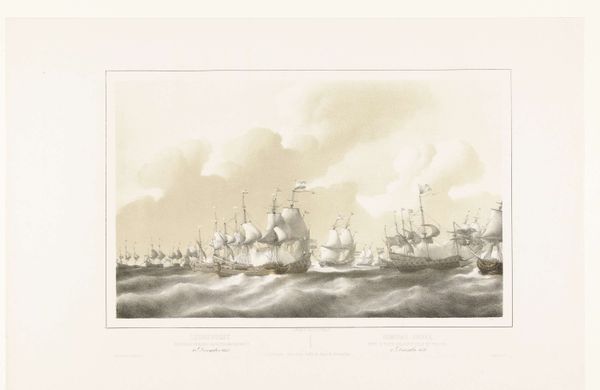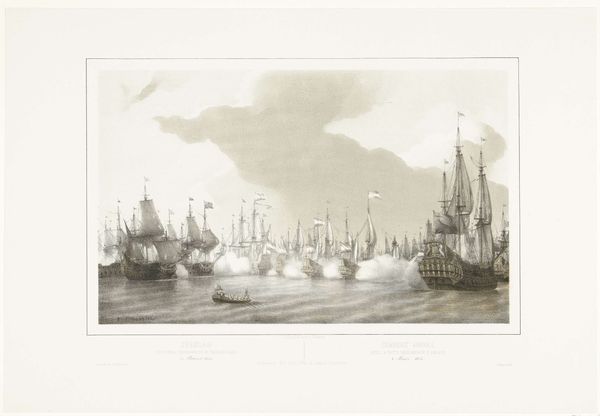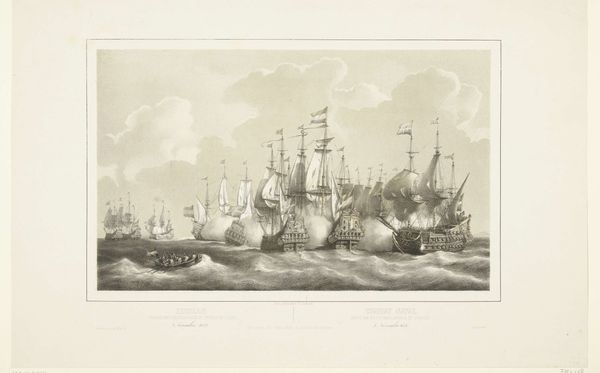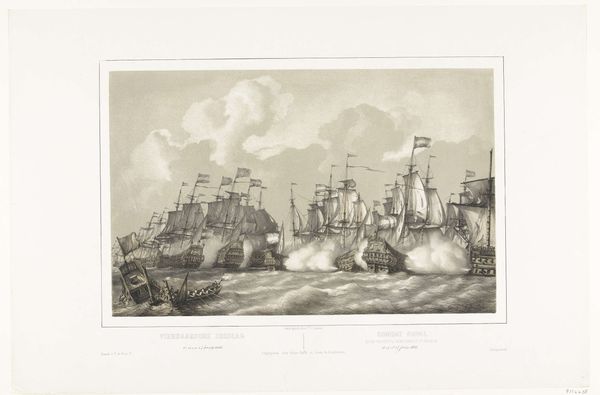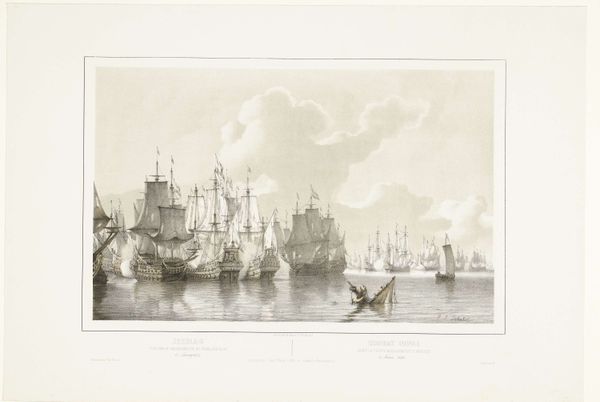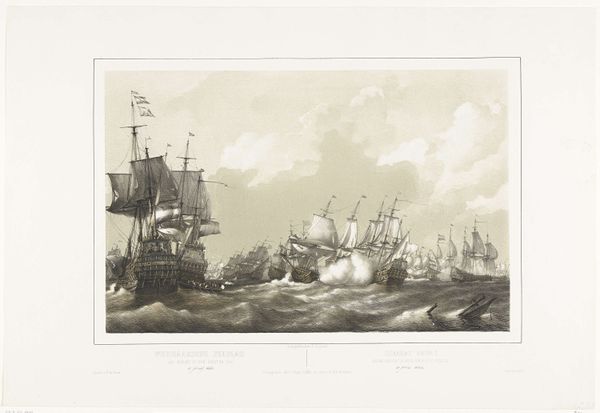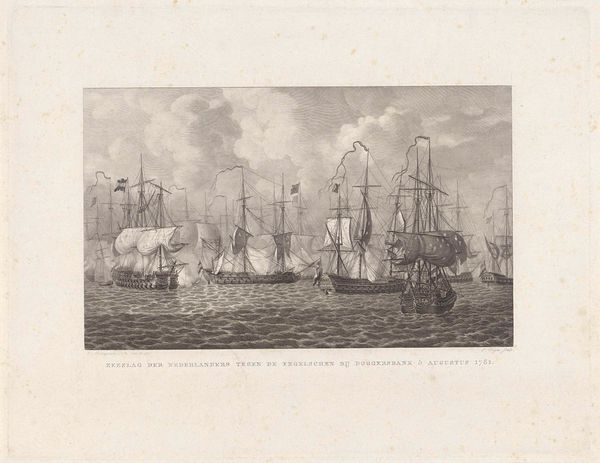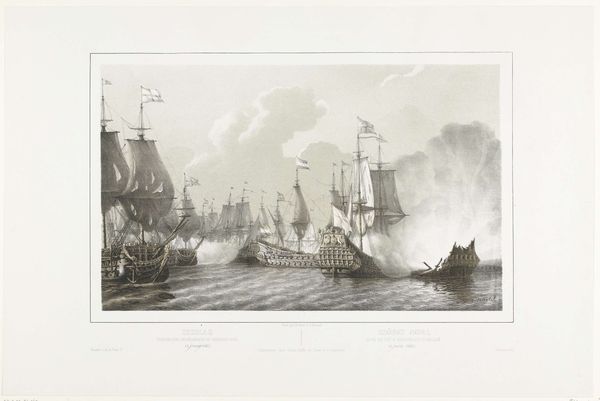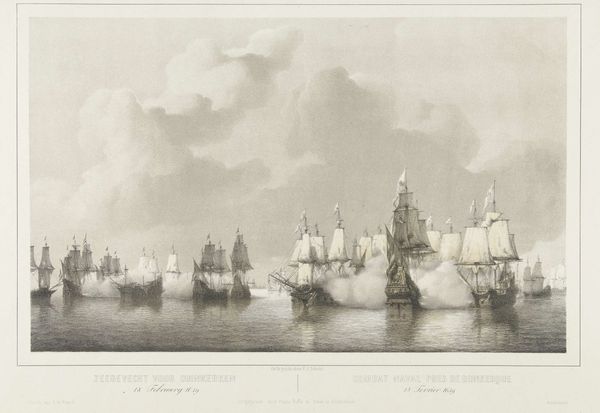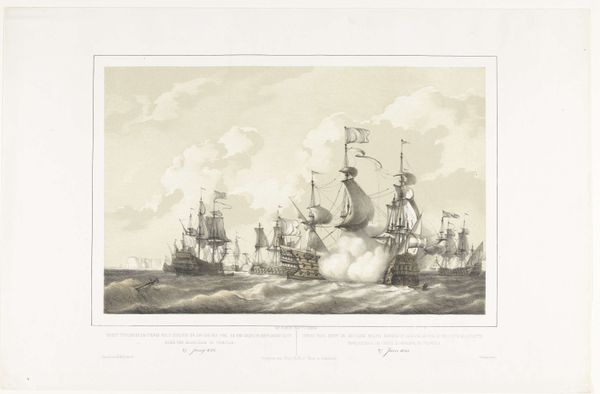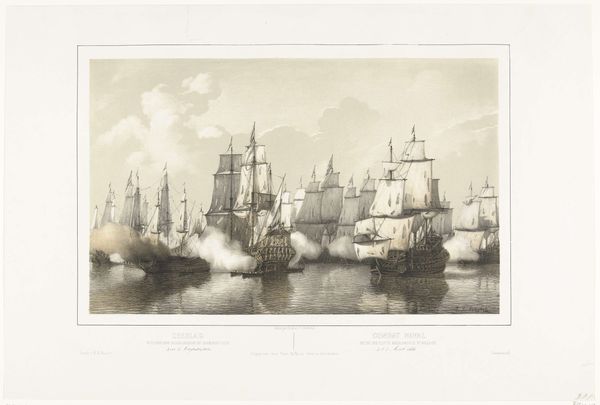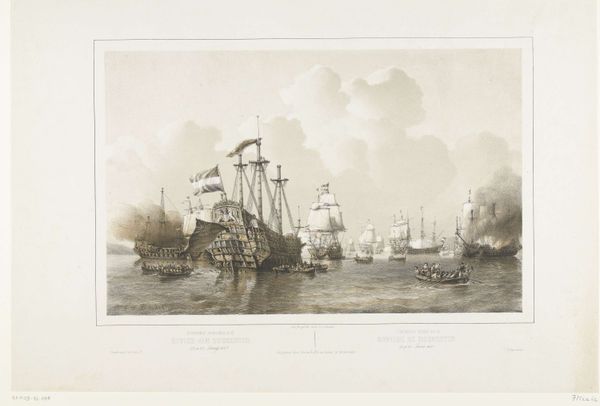
print, etching, engraving
#
pencil drawn
# print
#
etching
#
landscape
#
history-painting
#
engraving
Dimensions: height 351 mm, width 544 mm
Copyright: Rijks Museum: Open Domain
Editor: Here we have "Zeeslag bij Plymouth, 1652" by Petrus Johannes Schotel, dating from 1848 to 1855. It's an etching and engraving printed on paper, depicting a naval battle. The density of detail is astonishing for a print. What strikes me most is the diagonal arrangement of the ships—it’s so dynamic. What compositional elements stand out to you? Curator: Indeed, the artist's rendering is quite adept, considering the complexities of depicting maritime warfare in print. Ignoring for a moment the representational elements, I would call attention to the graphic contrast—the etching’s success relies on its ability to articulate gradations between the pure white of the paper and the darkest engraved lines. Notice how tonal shifts are further developed by varied densities of cross-hatching, allowing a surprising illusion of depth. Editor: So you are saying it’s not about the ships themselves, but rather how the lines and shading work together? Curator: Precisely. Observe the relationship between the foreground and background; the strategic fading of the ships towards the horizon line compresses space. The image is decidedly about surface and structure before it is about historical representation. How else might we consider Schotel’s compositional decisions? Editor: The billowing smoke really seems to unify the different planes. It acts like a kind of visual bridge, connecting ships in the foreground and background. Curator: An astute observation. This visual unity diminishes narrative specificity, instead producing a kind of formal harmony. It becomes less about the battle itself, and more about the dynamic interplay of form and line. Editor: I see it now. By looking at the relationship between form and content, I learned to appreciate the artist’s strategic orchestration. Thanks for sharing your perspective. Curator: My pleasure. Remember, a focus on an artwork’s formal vocabulary yields remarkable insights.
Comments
No comments
Be the first to comment and join the conversation on the ultimate creative platform.
